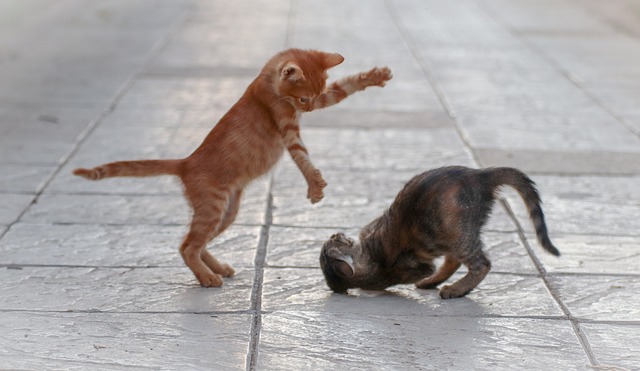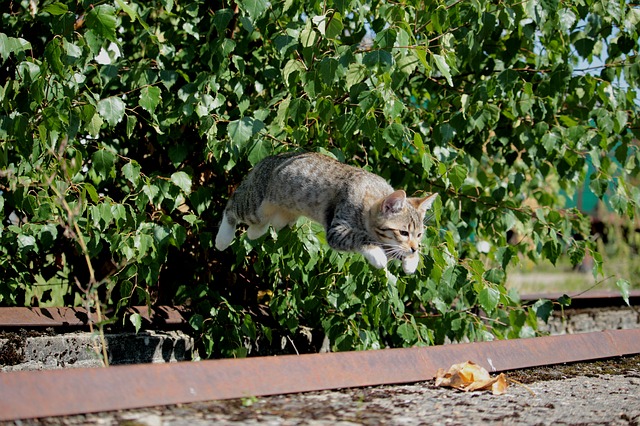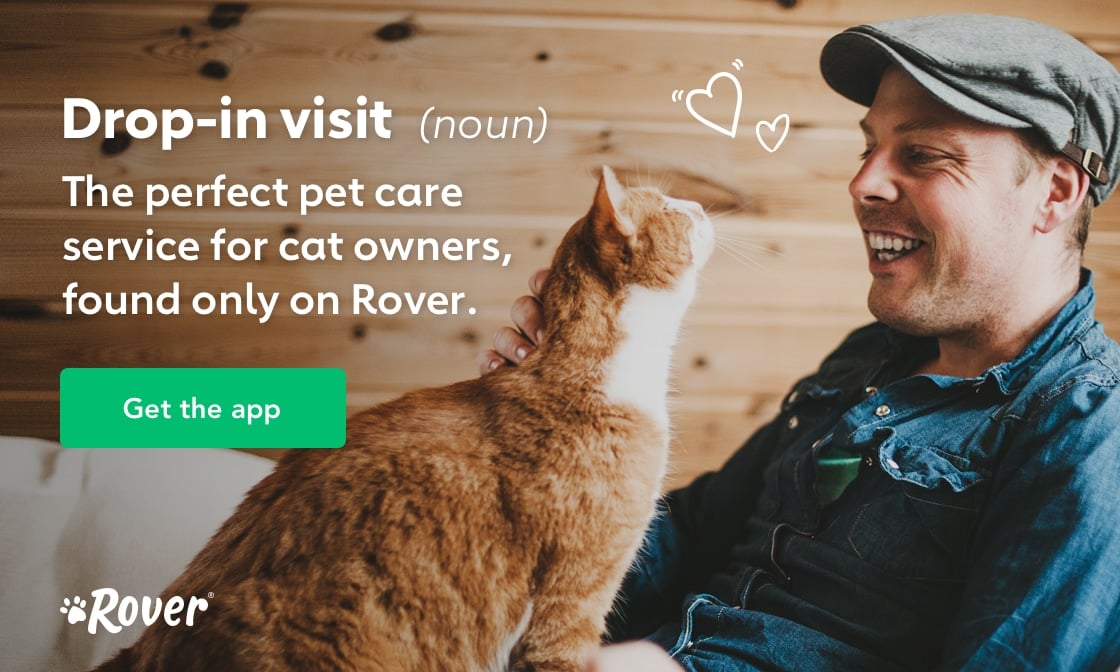One of the things cats do best is attack. They are superior lurkers, popping out from dark corners, from under furniture, and even flying through the air to pounce on their intended target. While most of the time these attacks are nothing but harmless, and healthy, play there are occasions where the behavior crosses a line–it’s all fun and games until someone gets impaled by cat finger daggers (AKA, claws). So why do cats attack and how can you tell the difference between normal play behavior and something more serious?
1. Cats attack because it’s their nature
Cats have evolved to be superior stalkers. Before their days as coddled creatures in our homes, cats relied on their pouncing skills to both feed and defend themselves.
2. Cats attack because it’s fun
Cats love to play and attacking is usually just another form of this. Attack play is most common in younger cats who will attack pretty much anything: you, kitten friends, plants, toys, toilet paper rolls, shoes, shadows…you get the idea.
3. Cat attacks can be bonding behavior
Bonding isn’t always just cute and cuddly. As Sharon Crowell-Davis, DVM, DACVB, and professor at the College of Veterinary Medicine at the University of Georgia, tells the folks over at VetStreet, “If you have a cat who tends to follow you around the house — walking, stalking or chasing — then you’ve got a cat who is fairly attached to you socially and wants to be near you because of that social attachment.”

4. Your cat could be defending itself
A cat who is scared may attack simply as a defense against a perceived threat. Make sure your kitty has plenty of “safe spaces” within her domain to hide in or retreat to.
5. Cat attacks could be a sign of a behavior issue
While most cats are usually pretty mellow, some cats can be aggressive. For these kitties there are generally two types of behavior – play aggression and status-related aggression. Play aggression is more common in younger cats as they learn how to use all of the gifts they were blessed with. In general, they will will figure out how to “play nice” with some gentle guidance from you or from their playmate. Status-related aggression tends to be displayed by mature cats and basically is them being the boss of you. “The best way to address status-induced aggression is to ignore an offending cat completely. Attention, including play and food rewards, should be given only when an aggressive cat is relaxed. A relaxed cat is not swatting or hissing, has normal sized pupils, ears held upright, and normal tail posture, with the tail held upward with no flicking, twitching, or hairs on end,” advise the experts at the Cornell Feline Health Center.
6. Cat attacks can be caused by poor socialization
Cats that are not properly socialized to humans and other cats as they grow up can attack simply because they don’t know anything different than defending themselves against the unknown. This isn’t something that goes away so it is very important to ensure kittens and young cats receive as much socialization as possible. Ideally, this includes with people as well as other animals.
7. Cat attacks can be caused by overstimulation
Some kitties suffer from overstimulation and their response can be to attack. Overstimulation can be too much brushing or petting, too much catnip, or even too much noise. Kitty will tell you when she’s had enough so keep an eye out and you should both be able to avert any takedowns.

8. Cats can attack because they are bored
Veterinarian Crowell-Davis tells VetStreet, “You need to look at whether your cat has adequate opportunities for acceptable types of play and realize that just bringing home a fabric mouse stuffed with catnip isn’t going to cut it.” It’s good to keep a wide variety of toys on hand for your feline friend to stave off boredom and keep her active. If you work a lot consider getting another kitty with a similar energy level for your cat to play with or even hire a Rover sitter to stop by and and provide some focused playtime.
9. Cat attacks can be caused by frustration
Some cats display a behavior called redirected aggression that is caused by an external stimulus, such as an unfamiliar cat outside of a window. Your kitty may go into defensive mode and when you go to comfort them, they are still “on guard” and may lash out as a impulse. The ASPCA points out, “A redirected attack occurs only if an agitated cat is approached or there’s someone close by. The cat won’t go looking for someone to attack! It’s not a malicious or even intentional type of aggression. It’s almost like a reflex, done automatically without thought. This is why it’s never a good idea to break up a cat fight or approach an agitated cat showing defensive or offensive aggression postures.”
10. Your cat may be acting out because she doesn’t feel well.
The ASPCA notes there are a number of medical conditions that can cause or contribute to kitty aggression including “toxoplasmosis, hyperthyroidism, epilepsy, abscesses, arthritis, dental disease, rabies, trauma, and sensory decline or cognitive dysfunction in older cats.” If your kitty suddenly begins acting out, get her to the vet for a checkup to see if there is an underlying cause.

Overall, cat attacks are nothing more than good fun…
…even if they sometimes result in a scratch here and there. If you think your cat is attacking for more nefarious reasons or might have a behavior issue, here are some ideas to explore:
- Watch for warning signs: cat body language is pretty easy to read. If your kitty has enlarged pupils, a quickly swishing tail, hair standing on end, flattened ears or is making growling noises, he is telling you to back off. Heed his warning. Move away from the cat and avoid further aggravating the situation
- Diversion: if your cat’s attacks are too frequent or getting a bit rough try diverting her attention with a quick squirt from a squirt bottle or by making a loud noise such as a clap. Many times, these interjections are enough to get her to snap out if it
- Redirection: as with above, trying to change the focus of your cat’s attention can be very helpful. Grab a wand toy or other interactive toy that you can use to direct kitty’s attention away from you and toward something more appropriate
- Claw care: if your cat will allow it, keep his claws nice and trim to reduce the likelihood of collateral scratch damage during an attack. If you absolutely can not trim your cat’s nails but scratching is an issue, talk to your vet about nail caps. These might take a little bit of getting used to for your kitty but they are a safe and humane option
- No roughhousing: Do not play rough with a kitten or cat or try to force them to do things (like forced holding or restraining by tail-pulling). Cats do not have the same play interaction patterns that people or dogs do so it’s important to teach them how to play appropriately so no one gets hurt. As the smart folks over at CatHealth.com point out, “Even a small tap on the nose can be perceived as a challenge and escalate the aggression.” If you have an overzealous kitten simply make a loud squeak or say “ouch!” while withdrawing your hand or person and they will quickly get the idea
- Consult an expert: If you are having serious issue with cat attacks that are causing injury to you or others most definitely reach out to a behaviorist or your vet. These experts can help you identify just what it is that is setting your kitty off and come up with ideas for managing the behavior. In some extreme cases kitties can suffer from something called idiopathic aggression, which can be dangerous. A behaviorist or veterinary professional can help you identify this severe type of aggression and work with you to figure out how best to balance quality of life issues for both you and your cat.






